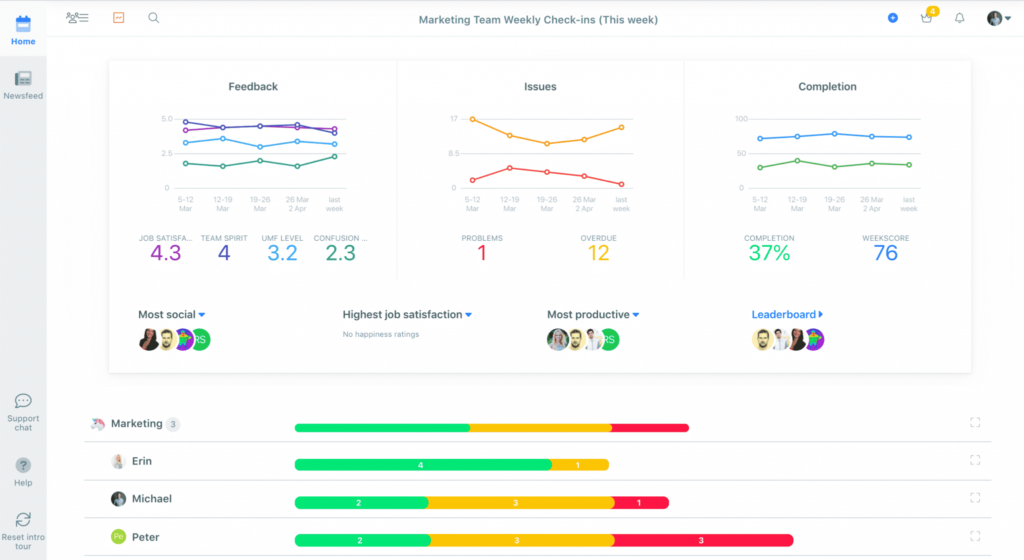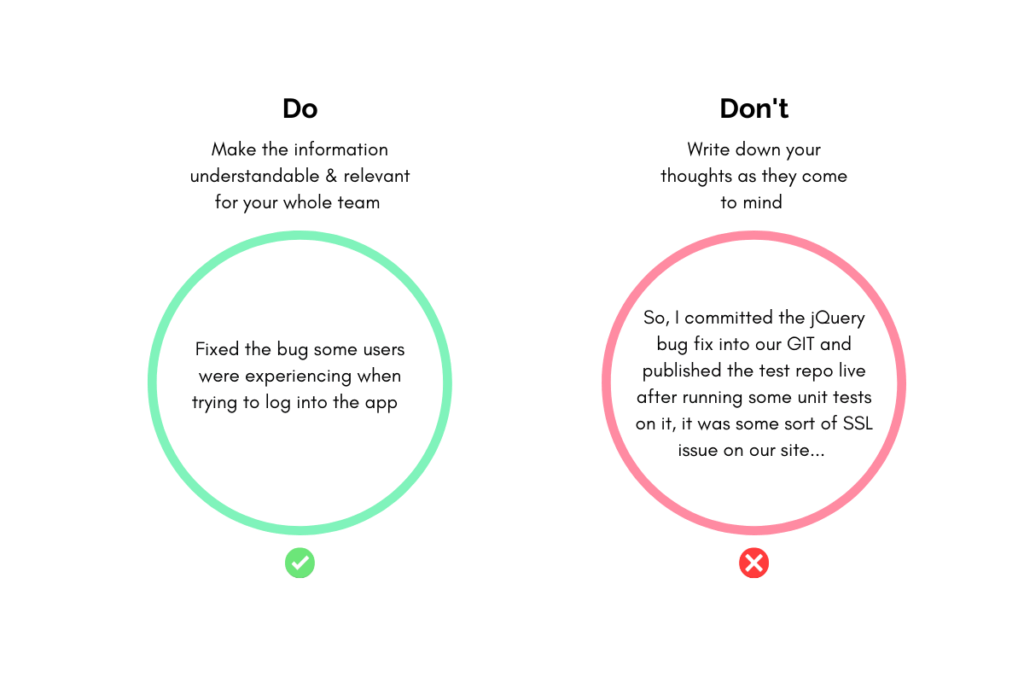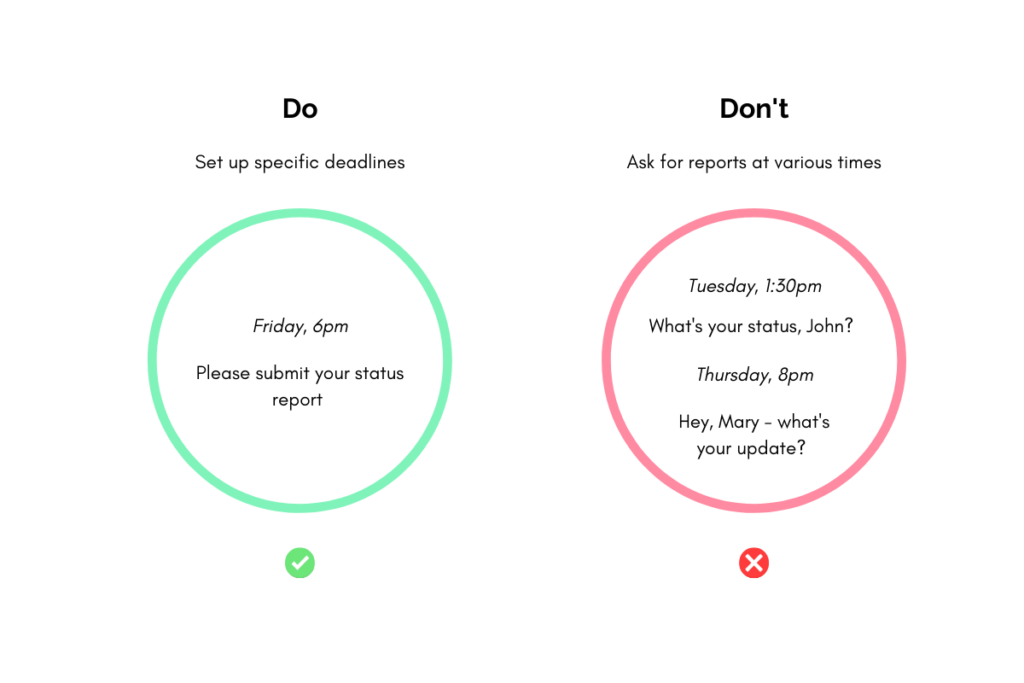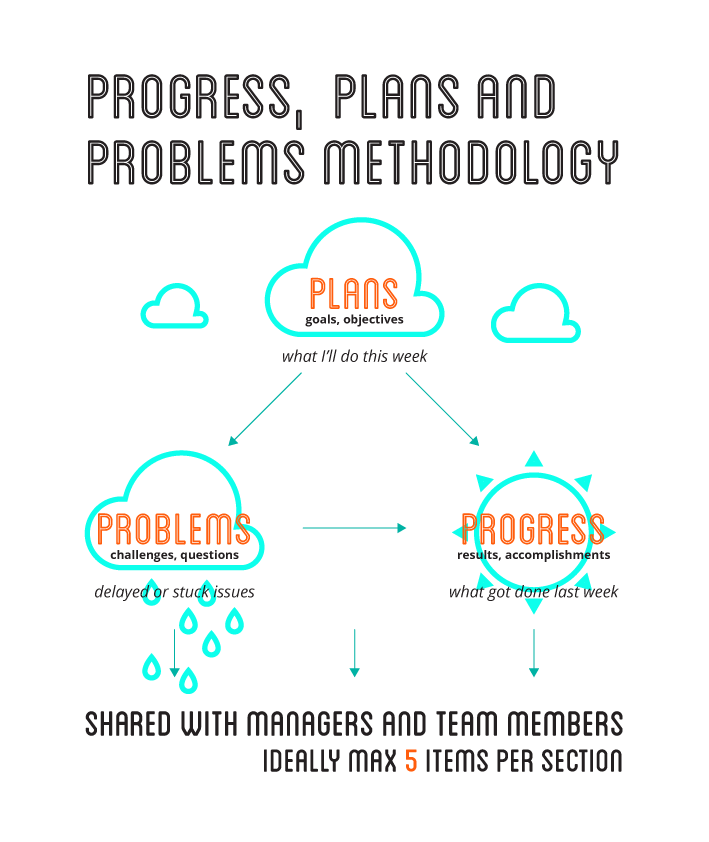With over 10 years of experience, Weekdone has provided tens of thousands of teams from startups to Fortune 500 with a simple goal-setting, status updates and progress reporting tool. This is why we developed Weekdone.
Weekdone is your solution for connecting managers and employees through real-time updates, e-mail reports and social newsfeed. Try it here! It’s free forever for small teams and offers a free trial for larger ones! Read about the benefits here.
Falling efficiency, lack of focus, no drive.
Said the team leader who doesn’t have good reporting software
The perceived negative qualities listed above come and go in companies over time. But shouldn’t we try to avoid them? Or, at the very least, take control in situations where we have the ability to do so? I think so!
Just like our bodies need to fight spring fever with the right mix of nutrients, we should give our organizations proper treatment when productivity falls below a critical level.
We’re not so arrogant, calling our service a ‘company doctor’ – but there is a simple cure out there for those of you looking to save your organization from this lack of efficiency. The cure is of course, the reason you’re here – progress reports!
Imagine if you were able to automate the process of transferring weekly status updates into a combined report at each week’s end. Sounds awesome, right? Weekdone helps you do that and so much more. It’s a status reporting tool for teams and a software that automates some of your most time-consuming management tasks.

The information in these reports help managers track team and individual’s progress while observing both company and team goals.
However, not many are familiar with the benefits of progress reporting.
So, let’s fix that too!
Progress reports used by teams encourage engagement and transparency. It’s been said that having a specific place to check in your progress increases the probability of meeting a goal by 95%.
For managers, progress reports offer concrete information about your employees’ contributions. It encourages the exchange of ideas and opinions. Truthfully, it is a very simple form of two-way communication. With some guidelines and basic understanding of the format, everyone can file an excellent report on their own.
Progress Report – The Basics
The foundation of every good progress report is a “PPP methodology”, something the Weekdone is built on. This stands for Progress, Plans and Problems. It may seem overly simplistic, but there is a deep framework hidden underneath.
PPP is “rich in stuff, low in fluff”.
Cleve Gibbon
Gibbon’s thought is shared by the likes of Emi Gal (CEO of Brainient) and Colin Nederkoorn (CEO of Customer.io), both of whom use PPP to organize and streamline their respective enterprises.
Even companies like Skype, Ebay, and Facebook picked up on the benefits of PPP.
So, what does PPP mean exactly?
- Progress. Progress lists employee’s accomplishments, finished items, and closed tasks. This category gives a good assessment of how much work has been done.
- Plans are the tasks you plan to accomplish over the course of one week. At Weekdone, we recommend setting these 3-7 plans on the Friday prior to “their work week”. All of the items listed under Plans are potential items of Progress. However, leave room for changes and accept that your Plans are not set in stone. Also consider, that these should ultimately help drive your Quarterly team goals forward.
- Problems. Problems lay out challenges and pitfalls. Some people leave correcting mistakes for last, but it is highly recommended to do this throughout the project.
When you keep in mind these three things, you already have what it takes to write a simple report. Should you choose to try Weekdone for free, these 3 categories are the ones in the default weekly status update form. *Which you can change and customize the titles of, if something else resonates more to you 🙂
Who, How and What of Progress Reports
Furthermore, if you really want to succeed in communicating the details and nuances of progress reports, you should always have these three questions in the back of your mind: who, how, and what?
Who?
The key part of progress reports is your team. Michele Puccio, Sales Director of Arrow, says that they helped him “stay connected with the team”. This is why your immediate focus should be on your colleagues and team dynamics.
Reports need to be concise and focused, so you should understand what your colleagues want. To help yourself with this task, ask a few questions:
- How are the readers connected to the project?
- Do they know the details and goals of the project?
- Are the readers comfortable with technical language?
How
Next, consider the tone of writing. Managers and executives may not understand the intricacies of employees’ conversational style. Use longer, comprehensible sentences but also try to refrain from writing essays. Ideally, there should be 5-7 keywords per sentence.

Take a look at a sample report for further guidelines and inspiration. Remember that the modern world is metrics-driven, so figures are more important than descriptions.
Instead of: “we need to increase the output”
Try: “we need to increase the output by X%”.
Concrete goals are more inspirational and, at the same time, more attainable.
What
The one mistake people tend to make when writing a progress report is avoiding writing about mistakes altogether. The purpose of progress reports is to objectively identify key difficulties and concerns and help them along the way. Even if the problem was already addressed, it needs to be put into writing to help avoid making the same kind of mistake in the future.
Secondly, keep in mind the relevance of your writing. Explain how every individual item connects and compares to Progress.
Keep It Simple
Even when progress seems small and changes are minimal, keep updating your reports. It enables transparency on all levels and can help assess challenges so you can plan your next actions accordingly.
Going back to our interview with IT distribution company, Arrow, Michele Puccio shares this example of how progress report influence your performance:
“In the beginning of the week, you decide to call 5 new customers. You write it down and have it under your nose. By the end of the week, you will call 5 new customers. You have made the commitment, communicated it to the rest of the team, and now need to honor this.”
Michele Puccio
Progress report templates are made to save time for everyone, so it is illogical to spend most of your workday on writing them. This can be easily aided by reporting tools. Many teams use Google docs or emails to do this.
That being said, it is better to use tools that are specifically developed with progress reports in mind and allow you to automate the process of writing them. Availability and accessibility are key for an excellent progress report.

The key to progress reports is regularity. Progress reports need to be done at least on a monthly basis, though weekly is encouraged. With a notification system integrated in Weekdone, you ensure that everybody remembers to send their reports in time.
Try Team Compass for automated weekly progress reports.
Implementing Progress Reports
1. Make sure to explain benefits to employees
This one seems a bit obvious, but going ahead without explaining employee benefits risks employee buy-in later. You need to explain the ‘whys’ to everyone. Some easy benefits to sell include: employees having a voice within the organization, and raised productivity and focus on new plans. To find out more about selling the benefits to your team, we recommend drawing from this infographic.
2. Make sure that communication goes both ways
Create a culture that allows discussions to be held from both sides and allow team members to provide feedback to their superiors as well as the other way around. Making a culture that encourages feedback as the default model improves overall company communication and makes progress reports more meaningful to employees and managers alike.
3. Spend less time in meetings by using progress reports as a substitute
Use progress reports (and other tools like our Weekdone) to decrease the amount of time wasted at meetings by encouraging frequent updating through the web and mobile-based services. If your status meetings stay in one place, you’ll save countless hours every month by writing instead of speaking.
4. Sign up with an online tool that offers you ready-made solutions
It may sound a little promotional, but online tools can make the implementation process so much easier. Progress reporting can be done via e-mail, word document or spreadsheet, but the challenges are far greater and you risk not having all of your information in one, easily accessible place. Combing through Google docs and emails is a colossal waste of time, after all. One of the advantages online tools have is that they automatically remind your team to fill their form, compile the received information, and then present it to you in a way that’s both appealing and fun.
Implementing progress reports with a tool
1. Make the progress report meet your needs
Using a ready-made template does not mean that you have to adjust to its specifications. Actually, these tools are flexible enough to meet your standards and needs. What is more, they provide you with even better ideas that might have been missed otherwise.
2. Write down Objectives and Key Results
Before inviting your whole team, make sure you have set up Objectives. The goals that need to be reached in a certain period and key results that help the team achieve these. Try this management technique used by LinkedIn, Twitter and Google. For a more in depth understanding of OKRs, feel free to check the Weekdone step-by-step guide to OKRs.
3. Invite your team
After you have set up all crucial information, it is time to invite your team. Send them an automatic e-mail to sign up.
4. Contacting product support to give a quick demo for everyone
Explaining this new tool to everyone on the team might be a challenge. Especially when you are not too familiar with it. No worries, that is exactly why product support people are here for. Remember, there is no such thing as a dumb question. There are only dumb answers. Don’t be afraid to contact the support for additional materials, demo or whatever is on your mind.
Sign up for free Weekdone team management software trial to implement best practice based progress reporting in your team. Set structured goals to align activities throughout your organization via leading OKR software. Track weekly plans and progress. Provide feedback and move everyone in a unified direction. Try it now!
